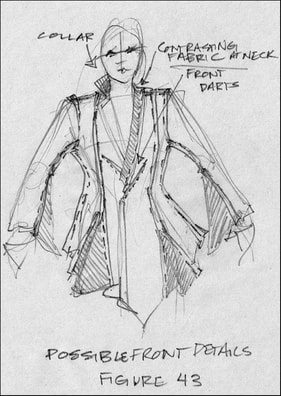|
One of the main ideas behind staple draping classes is the notion of re-making things yourself. You don't need to take a class to get started, though. All you really need is old clothes and the tools to take them apart. Seam rippers are handy tools, so are razor blades and scalpels, but plain old scissors work just fine.
Take an old garment, preferably one you won't miss when it's cut into pieces. This process just shows you how it's made. If you want, you can use it as a pattern later. Look for the biggest, longest seams. On pants, those are the inseams (crotch and inside leg seams). For shirts and dresses and coats, the long seams are down the sides and in the back. Take the scissors and cut the seams open, getting as close to the seams as you can. Then take a look at the garment. Can you lay it out flat, without having parts fold under or stick out? Are there other seams to take apart before the whole thing can be laid out flat on a table? If so, find them and cut them open too. Don't cut ALL the seams open. The goal is to get the piece of clothing able to lay out flat on a table, so you can really see all the parts. What do those shapes look like? Pant legs will be long rectangles with shaped-in areas for the crotch, the pockets, the waist. Shirts and dresses and tops might be rectangular with armhole and neck scoops. Try to compare each piece to a shape you recognize. It sounds silly, but this is how our brains work. Looking for recognizable shapes helps us understand them better. Give it a whirl. You'll start to see clothing shapes differently. Staple Draping by A.Laura Brody is licensed under a Creative Commons Attribution-NonCommercial-ShareAlike 3.0 Unported License.
0 Comments
Your comment will be posted after it is approved.
Leave a Reply. |
A. Laura Brody
I re*make mobility devices and materials and give them new lives. Sometimes I staple drape. Archives
June 2024
|


 RSS Feed
RSS Feed